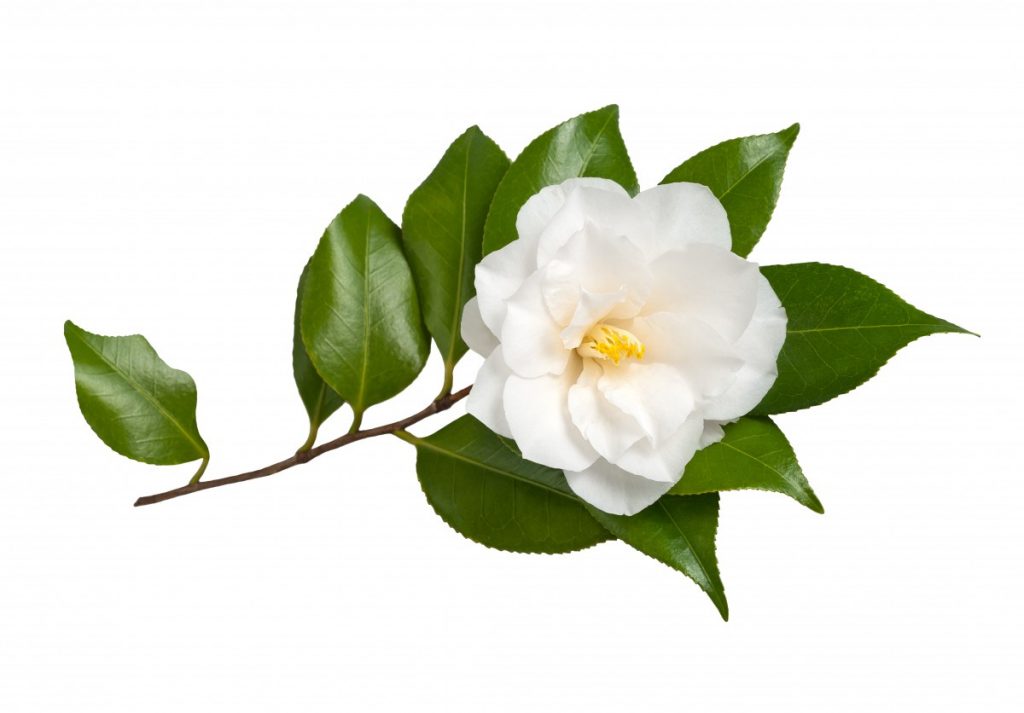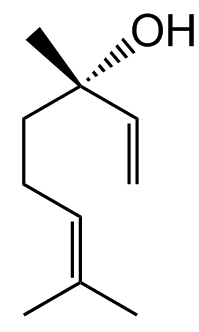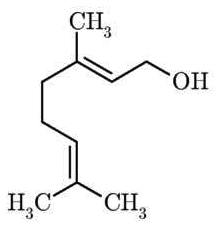
Camellia Sinensis: The Many Faces of The Tea Plant.
I remember the initial shock I felt when I was told that all tea comes from the same plant, Camellia Senensis. White Tea, Green Tea, Oolong, Yellow Tea, Red Tea (also known as Black Tea), and Pu Er, are all so unique; at first I couldn’t believe it. How could Green Tea, with its vibrant green color and subtle notes of grassy sweetness, come from the same origin as Pu Er, with its dark mahogany color and rich earthy flavor? The answer lies in a long history of co-evolution with the Camellia Senensis plant and the alchemic processing techniques that emerged over time. It has shaped many cultures, and each culture prepares their tea differently. Thankfully, through advancements in technology, humans can now understand the science behind the ancient cultural practices that give us the many faces of tea. I am looking forward to learning more through my research and getting to share what I learn through weekly tea workshops. I created a table to chart which books I ordered from Summit, which are available online, and what could be picked up from the library.
*To view the full list click the link below.
Ordered Book List
Example:
| Online E-Book |
Library |
Summit Requested |
| Protective Effects of Tea on Human Health |
The Japanese Tea Ceremony
-GT2910.S3 2008 |
Tea: a symposium on the pharmacology and the pharmacology and physiologic effects of tea.
Henry J. Klaunberg biological |
| Making Tea, Making Japan Cultural Nationalism in Practice
Kristin Surak 2012 |
The tea ceremony Senoo Tanaka 1928-1973
-Gt2910.T2978 |
Tea: History, Terroirs, Varieties |
I made this table because occasionally Summit does not have the book I requested. It can also be easy to lose track of what I have ordered. Once I receive e-mail notification if the book is unavailable, shipped, or ready to pick up from the library, I can mark the book in the appropriate category, then go from there. I always request more than I need; if the book is unavailable then I have other material to use for my research.
Sources
Camellia Sinensis HD Image id: 11242f | Credit
Week 2-Reflection
This week was particularly difficult because I am behind due to missing the first week because of a family emergency. I was able to research and order all of my books which feels good; while I am waiting for them to arrive I started to read from a book I already own. After reading all of the content available in the book, On Food and Cooking: The Science and Lore of The Kitchen, by Harald McGee, I am feeling inspired and grateful for a deep, yet simplified, explanation of the chemistry of the tea plant and its processing. McGee reminded me of the extraordinary results of the co-evolution between humans and the plants. The tea plant’s secondary compounds (terpenes, polyphenols, etc.) are made to deter mammals to protect itself from damage. Humans over time have learned how to develop cultural practices to process the tea to dilute, or neutralize, these compounds to create a product that is healing rather than toxic. I am fascinated by the fact that many of these cultural practices were created through slow alchemic experimentation.
Notes from Week 2 Reading
| Author |
Book Title |
| Harold McGee |
On Food and Cooking: The Science and Lore of The Kitchen |
| Content |
Notes |
Page number |
| Flavorings Are Chemical Weapons |
· When eaten straight most spices and herbs are acrid, irritating, numbing.
· The chemicals responsible for these sensations are actually toxic.
· Example: purified essence of oregano and thyme can damage skin and lungs; this is their primary function.
· The plants produce these chemicals to be irritating to animals or microbes and is a source of protection.
· The volatility gives them the advantage of counterattacking through the air.
· Some animals will be deterred by smell alone. |
389 |
| Turning Weapons Into Pleasures: Just Add Food |
· Humans have come to prize the chemical weapons made to deter us.
· Herbs and spices can be made nontoxic through the principle of cooking and dilution
· Eating a whole oregano leaf vs. small amounts diffused through a whole dish. |
“ |
| The Chemistry and Qualities of Herbs and Spices |
· The flavorful material in an herb or spice is traditionally called an essential oil
· Aroma chemicals are more similar to oils and fats than they are to water, and therefore are more soluble in oil then they are in water
· Cooks make flavor extracts by infusing herbs in watery vinegar and in alcohols but both alcohol and vinegar’s acetic acid are small cousins of fat molecules and help dissolve more aromatics than plain water could.
· The defensive aroma chemicals can have disruptive effects on a plant’s own cells as well as on predators, so plants take care to isolate them from their inner workings.
· Plants stockpile their aroma chemicals in specialized oil-storage cells, in glands on the leaves, or in channels that open up between cells. |
“ |
| Flavor Families: The Terpenes |
· Terpene compounds are constructed from a zigzag building block of five carbon atoms, which are versatile and can be combined, twisted, and decorated into tens of thousands of different molecules.
· Plants usually create a mixture of defensive terpenes.
· They are characteristic of the needles and bark of coniferous trees, citrus fruits, flowers, and herbs and spices.
· Terpenes tend to be volatile and reactive. They are often the first molecules to reach the nose |
390 |
| Linalool
Terpene found in the aromatic qualities of Oolong |
Linalool

|
|
| Geraniol
Terpene found in the aromatic qualities of Oolong |
 |
|
| Caffeine |
· Caffeine is the most widely consumed behavior-modifying chemical in the world.
· It is an alkaloid -à what is an alkaloid?
· Continued notes below… |
433 |
| Alkaloids |
· Bitter tasting toxins that appear in plants around the time mammals evolved
· Almost all known alkaloids are poisonous at high doses
· Any of a class of nitrogenous organic compound of plant origin that have pronounced physiological actions on humans. They include many drugs (morphine, quinine) and poisons (atropine, strychnine).
|
238 |
| Caffeine |
· Caffeine is an alkaloid which interferes with a particular signaling system used by many differentiate cells, and has several effects on the human body.
· Caffeine stimulates the central nervous system
· Relieves drowsiness and fatigue
· Quickens reaction time
· Reaches its maximum levels in the blood between 15 minutes and two hours after consumption. Levels are reduced by half within three to seven hours. It’s effects are more noticeable in people who don’t normally consume it. |
433 |
| The Tea Leaf and It’s Transformation |
· Fresh leaf tastes bitter and astringent due to a lot of bitter and astringent phenolic substances
· Aromatic molecules are locked up in nonvolatile combinations with sugar molecules
· Green tea retains many of the qualities of the fresh leaf
· Oolong and Red/Black Tea, rely on enzyme transformation
· Turns defensive materials into delightful molecules. |
435 |
| How Tea Enzymes Create Flavor, Color, and Body |
· The periods of enzyme activity during tea-making has traditionally been called fermentation. This is incorrect technically though because there is not any significant microbial activity
· There are two general enzymatic transformation for tea
1. Liberation of aroma molecules which, are bound up with sugars and can’t escape into the air
2. Building large molecules from small ones. There by modifying the flavor, color, and body. The small molecules are the tea leaf’s abundant supply of three-ring phenolic compounds, which are astringent, bitter and colorless. The leaf’s browning enzyme, polyphenoloxidase uses oxygen form the air to join the small phenolic molecules together to form the larger complexes.
· A combination of two phenolics give a kind of molecule, Theaflavin, which contributes to yellow and light copper and is less bitter and astringent.
· Complexes of three to ten of the original phenolics are orange-red and, and less astringent and are called thearubigens
· The largest complexes are brown and not astringent at all and are called theaflavin digallate
· The longer the tea leaves are rolled (hand rolled or by machine) withered (allowed to sit out in the heat or a heat controlled room) and not heated to halt the enzyme (polyphenoloxidase) the less bitter and astringent and the more colored the tea leaves will become.
· In Oolong tea half of the small phenolics have been transformed
· Black Teas 85% |
436 |
| Tea Flavor |
· The taste of tea comes from many different sources
· Tea is mildly acidic and bitter; It also has trace amounts of salt
· Rich in amino acid, theanine, which itself is sweet and savory and partly breaks down into glutamic acid.
· Chinese green teas also contain synergizers of savoriness (GMP) Monosodium glutemate and (IMP) Inosine monophosphate
· Monosodium glutemate is usually known as MSG, and when made artificially, and used as artificial flavoring, has a lot of stigma attached to it.
· Bitter caffeine and astringent phenolics bond to and take the edge off each other to produce the impression of a stimulating but usually not harsh body. (especially important to the taste of red/black teas) |
439 |
| Aroma |
· Green tea steamed (grassy, seaweed, shellfish notes)
· Green tea pan fried (savory toasty notes
· Oolong and Red/Black tea (floral, sweet, earthy)
· 600 volatiles have been identified in black tea |
439-440 |
| Brewing |
· Tea is brewed in various ways in different parts of the world
· In the West: a relatively small amount of loose leaf tea, about a teaspoon, or a tea bag, per 6-oz cup is brewed once, for several minutes, then discarded.
· In Asia: a larger quantity of leaves of any tea-as much as a third of the volume of the container- is first rinsed with hot water, then infused briefly several times. This style allows the drinker to enjoy the following infusions changing flavor and aroma gradually.
· The infusion time depends on two favors. One is leaf size; small particles and their great surface area require less time for their contents to be extracted. The second is water temperature. The water temperature will depend on the type of tea being brewed.
· Oolong and Black tea are typically brewed at a temperature close to boil, and briefly.
· Green tea is infused longer in cooler water, 160-110 degrees F, which limits extraction of the abundant bitter and astringent phenolics and minimizes the damage to the chlorophyll which gives it its vibrant green pigment.
· In a typical 3-5 minute infusion of black tea, about 40% of the leaf solids are extracted into the water.
· Caffeine is rapidly extracted and more than three quarters of the total in the first 30 seconds. When preparing tea the Chinese way after the tea is washed a lot of the caffeine is discarded. The larger phenolic complexes come out more slowly. |
440 |
| Serving Tea |
· Once the tea is brewed the liquid should be separated from the leaves immediately. If one doesn’t the extraction will continue and the flavor will become too harsh.
· The tea will be best consumed after being freshly brewed. The aroma will dissipate and their phenolic components react with dissolved oxygen and with each other; this changes the color and taste over time.
· Some cultures mix their tea with milk. When the milk and tea are combined the phenolic compounds immediately bind to the milk proteins, become unavailable to bind to the mouth surfaces and the taste becomes less astringent. (it is best to mix hot tea to warm milk, rather than vice versa, because the milk will then be heated gradually avoiding a curdling reaction.
· Lemon juice is sometimes added to tea to bolster its tartness and add the fresh citrus note. It will lighten the color of red/black tea by changing the structure of the red phenolic complexes (the complexes are weak acids themselves and take up hydrogen ions from lemon juice). Alkaline brewing water, conversely tends to produce blood-red infusions from black tea, and can make green tea red. |
|
Sources
“Image: File:Geraniol.png – Wikimedia Commons.” Accessed March 5, 2017. https://www.google.com/imgres?imgurl=https://upload.wikimedia.org/wikipedia/commons/3/39/Geraniol.png&imgrefurl=https://commons.wikimedia.org/wiki/File:Geraniol.png&h=2296&w=2282&tbnid=Ax4ugSWDxcbM2M:&vet=1&tbnh=160&tbnw=159&docid=NJPi3CsIPQHBRM&itg=1&usg=__evTxGK2V2VYtc79wMlT8of4Vatk=&sa=X&ved=0ahUKEwj4xeumusDSAhXnlFQKHRInBZUQ_B0IIDAB#h=2296&imgrc=Ax4ugSWDxcbM2M:&tbnh=160&tbnw=159&vet=1&w=2282.
“Image: Linalool – Molecule of the Month October 2013 – HTML-Only Version.” Accessed March 5, 2017. https://www.google.com/imgres?imgurl=http://www.chm.bris.ac.uk/motm/linalool/S-linalool.gif&imgrefurl=http://www.chm.bris.ac.uk/motm/linalool/linaloolh.htm&h=332&w=199&tbnid=krGd9i3Lu9qYVM:&vet=1&tbnh=160&tbnw=96&docid=uPTghtUqFQOZWM&itg=1&usg=__IrVVcB4bpdKeFKaDV81r_Dd3EO4=&sa=X&ved=0ahUKEwiM4PrIu8DSAhVHh1QKHU2VB-gQ_B0IIDAB#h=332&imgrc=krGd9i3Lu9qYVM:&tbnh=160&tbnw=96&vet=1&w=199.
McGee, Harold. On Food and Cooking: The Science and Lore of The Kitchen. Revised 2004. Scribner, n.d.



